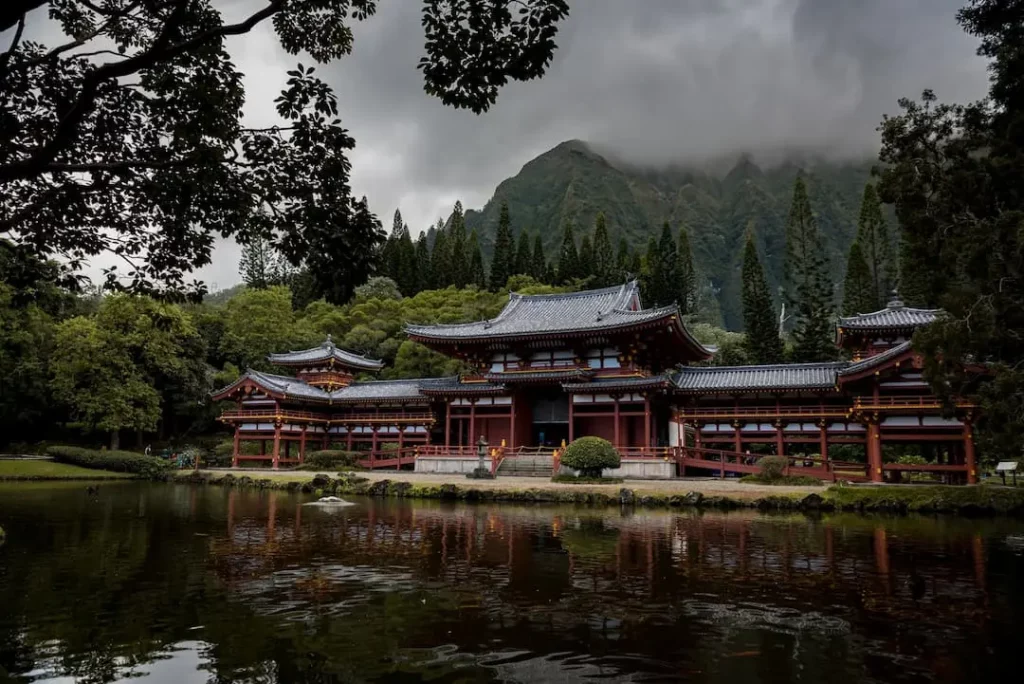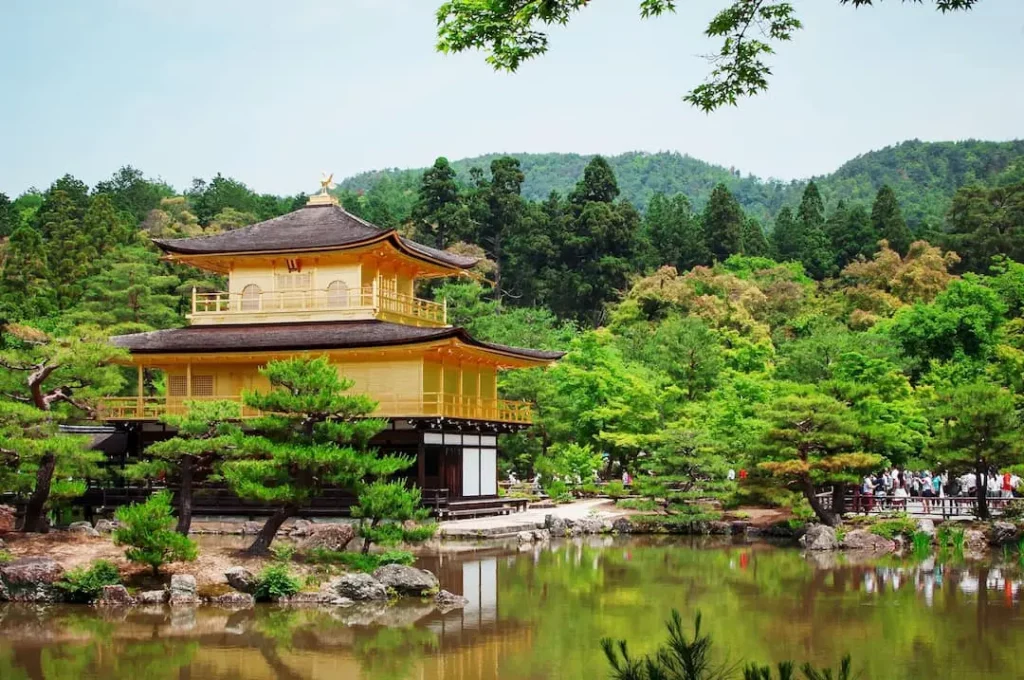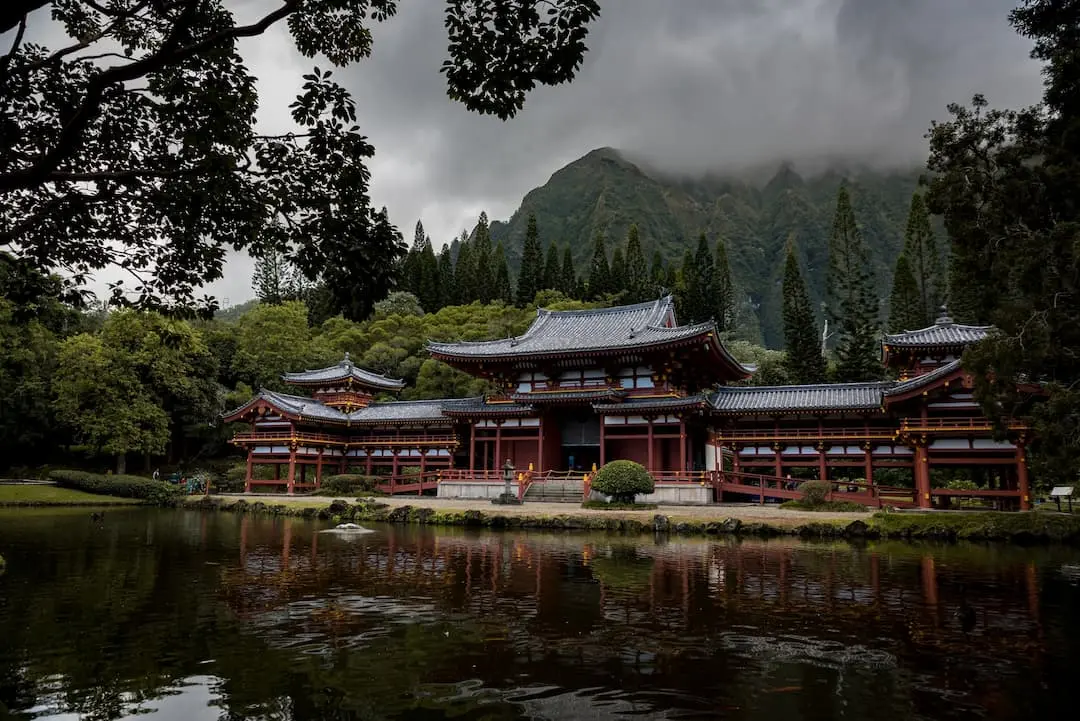Buddhist architecture represents the philosophy of Buddhism and creates tranquil spaces. It discusses how Buddhist architecture has evolved in various regions while maintaining principles of harmony, simplicity, and connection with nature. The role of architectural elements like stupas, pagodas, and temples in facilitating meditation and spiritual growth is emphasized. The credibility is established through examples from different countries and references to renowned architects and scholars. The article sets the stage for a comprehensive exploration of Buddhist architecture.”
The origins and philosophy behind Buddhist Architecture

Buddhist architecture is influenced by the teachings and philosophy of Buddhism, which emerged in Nepal around the 5th century BCE. The design reflects balance, harmony, and mindfulness principles, with a solid connection to nature. Elements like courtyards, gardens, and water features create a peaceful environment for meditation. Symbolism, such as bell-shaped stupas for enlightenment, and features like mandalas and prayer wheels aid in spiritual practices. Overall, Buddhist architecture aims to create spaces that foster spiritual growth and connection between individuals and their surroundings.
Key elements of Buddhist Architecture: Symbolism and Purpose
Buddhist architecture exemplifies intricate structures that convey the teachings of Buddhism through symbolism and purpose. The central elements include the stupa, a dome-shaped design representing enlightenment, and elaborate carvings showcasing Buddhist narratives. Prayer halls provide serene worship and reflection spaces positioned to face east for a symbolic connection to new beginnings. Courtyards, water bodies, and gardens create harmonious environments that encourage deep introspection and spiritual growth. Overall, Buddhist architecture offers a profound experience, allowing individuals to connect with their spirituality and gain insight into Buddhist principles.
Iconic examples of Buddhist Architecture around the world

Buddhist architecture is known for its beautiful and harmonious designs, as well as its deep spiritual significance. Two notable examples are the Mahabodhi Temple in Bodh Gaya, India, and Borobudur in Indonesia. The Mahabodhi Temple, built in the 3rd century BCE, commemorates where Gautama Buddha attained enlightenment. Its adorned spire and intricate carvings are awe-inspiring, attracting devotees and scholars. Borobudur, a monumental stone structure from the 9th century AD, showcases a complex mandala with elaborate reliefs representing earthly and heavenly realms. These remarkable structures demonstrate how Buddhist architecture combines symbolism and artistry to transport believers into a transcendent realm and serve as spiritual beacons across cultures and periods.
The serene beauty of Pagodas: A closer look
“The Serene Beauty of Pagodas: A Closer Look ” is an insightful exploration of pagodas’ cultural and architectural wonders. Several stunning structures are found in Myanmar, China, and Japan, with intricate designs and significant symbolic meanings. This article provides an overview of these structures. It discusses the multi-tiered roofs, elegant eaves, and ornate carvings that make these pagodas captivating. It also delves into the spiritual ambiance of these sacred spaces, where prayer, meditation, and religious ceremonies occur. This piece emphasizes the importance of pagodas as cultural heritage sites while showcasing their enduring allure for visitors and scholars seeking tranquility and breathtaking aesthetics.”
Temples as Spiritual Sanctuaries: Unveiling their design secrets
Temples are revered as spiritual sanctuaries where individuals connect with a higher power. Their architectural design secrets demonstrate a deep understanding of human psychology and spirituality. Each aspect of temple design is carefully crafted to facilitate a transcendent experience, from grand spires to intricate carvings. Spatial planning, acoustics, and lighting are considered to create a conducive environment for meditation. Symbolic elements like mandalas and sacred geometry enhance the spiritual energy within. Temples serve as timeless sanctuaries, blending tradition with modern techniques. By harmonizing aesthetics and spiritual intentions, temples provide a serene atmosphere for self-discovery and transcendence.
Monasteries: A glimpse into the life of Buddhist Monks

Monasteries offer a glimpse into the disciplined life of Buddhist monks, serving as an escape from the outside world. These spiritual retreats provide sanctuaries for individuals seeking inner peace through meditation, prayer, and strict adherence to monastic rules. Monks engage in daily rituals focusing on simplicity, selflessness, and detachment from material possessions. Through community responsibilities like studying ancient scriptures and sustaining themselves through communal work projects, monastic life promotes enlightenment and spiritual growth. Observers gain insight into the sacred existence of those solely dedicated to seeking enlightenment and understanding universal truths by immersing themselves in this unique atmosphere.
Zen Gardens: Creating harmony between Nature and Architecture
Zen gardens, also known as Japanese rock gardens, aim to blend nature and architecture harmoniously. These serene spaces evoke peace and contemplation through careful design. Emphasizing simplicity, they feature selected elements arranged in balanced symmetry. Zen gardens feature rocks, gravel, sand, lush moss, and meticulously positioned foliage. Stone patterns and rocks represent mountains and islands in water. Visitors can practice mindfulness and meditation while appreciating the thoughtfully curated landscape. These gardens serve as aesthetic delights and sanctuaries from everyday chaos, fostering tranquility, connection with nature, and personal growth within an architectural setting.
Preservation Efforts: Protecting the legacy of Buddhist Architecture
Preservation efforts for Buddhist architecture are vital for its longevity and cultural significance. These structures have historical, religious, and artistic value with unique styles and symbolism. Strategies involve documenting architectural features, using restoration techniques that respect original designs, regular maintenance, and raising awareness about preservation. Collaboration with various stakeholders is crucial to maintain authenticity and accommodate contemporary use. By preserving this heritage, future generations can appreciate its profound significance in Buddhist teachings and beliefs, ensuring its continuity.
Conclusion
Buddhist architecture holds a timeless and universal appeal due to its profound significance and admiration across cultures and time. Its symbolism richness, intricate craftsmanship, and harmonious integration with nature evoke a sense of awe and tranquility. The beauty of Buddhist architecture lies in its ability to adapt to different contexts while remaining faithful to its core principles. Doing so inspires inner peace, fosters a connection with the divine, and facilitates a universal understanding that transcends boundaries.




